- Data Basin |
- Datasets |
- Potential Operational Delineations (PODs) - North Coast Region of California
Potential Operational Delineations (PODs) - North Coast Region of California
- Description:
PODs_DRAFT_7_12_2022
Potential Operational Delineations, or PODs, are a spatial tool for fire planning and wildfire prevention. They are being developed regionally across the United States.
PODs are a network of connected features across a landscape that are relevant for fire control operations. This includes a network of roads, ridgetops, riparian areas, and other fuel breaks. PODs provide land managers a formal process for developing landscape-scale wildfire response options before fires start, because they outline where the best potential locations are to contain fire and create management units.
PODs are created by drawing a lattice of connecting lines through geographic features that could be suitable for fire operations. This is best accomplished through in-person meetings with regional experts discussing the pros and cons of different control features and drawing on physical maps. From December 2021-May 2022, the NCRP hosted several workshops across the North Coast Region to solicit input on the PODs dataset. These workshops included representatives from the following organizations:
CAL FIRE
Local Fire Departments
United States Forest Service
The Watershed Training Center
Several Fire Safe Councils
Timber Industry Representatives
County Government Officials
Tribal Representatives
Cooperative Extension Specialists
Land Trusts
Resource Conservation District (RCD) Representatives
Data
The basemaps that the PODs are drawn on use various wildfire planning models to help guide the best location for the PODs. The foundational datasets used included:
Suppression Difficulty Index, or SDI, is a quantitative rating of relative difficulty in performing fire control work. Factors include topography, fuels, expected fire behavior under severe fire weather conditions, firefighter line production rates in various fuel types, and accessibility
Potential Control Locations, or PCLs, show the probability of a point or feature on a landscape being successfully used as a containment point for large wildfires. PCLs are developed through similar data inputs as the SDI with special attention to proximity to fire stations and response time.
In addition, PODs have been created by partners at the USDA Forest Service. The team integrated existing PODs from the Mendocino National Forest, Six Rivers National Forest, and Modoc National Forest into the basemaps to give workshop attendees the chance to review and refine existing PODs.
The main attribute of note in the dataset is the field called “PODEditor”. There are three attribute values, “Workshop”, “USFS” and “NCRP- Not Part of a POD”. PODs that were created from the workshops hosted by the NCRP are labeled “Workshop”, PODs submitted by the Forest Service and unchanged from the workshops are labeled “USFS” and PODs that are used to fill in the NCRP region, such as coastline slivers, but are not relevant for fire control operations are called “NCRP-Not Part of a POD”.
While this dataset was drafted to cover the NCRP region, the PODs are built out beyond the boundaries of the north coast.
- Data Provided By:
- North Coast Resource Partnership, Oregon State University, Mid Klamath Watershed Council, Western Klamath Restoration Partnership, Tukman Geospatial LLC
- Map Service URL:
- https://services5.arcgis.com/rqUExxGU0vzKhYXX/arcgis/rest/services/Map/FeatureServer/0
- Content date:
- 2022.07.12
- Contact Organization:
-
Tukman Geospatial LLCella@tukmangeospatial.net
- Contact Person(s):
- Use Constraints:
 This work is licensed under a Creative Commons Attribution 3.0 License.
This work is licensed under a Creative Commons Attribution 3.0 License.
- Layer:
- Layer Type:
- Currently Visible Layer:
- All Layer Options:
- Layers in this dataset are based on combinations of the following options. You may choose from these options to select a specific layer on the map page.
- Description:
- Spatial Resolution:
- Credits:
- Citation:
- Purpose:
- Methods:
- References:
- Other Information:
- Time Period:
- Layer Accuracy:
- Attribute Accuracy:
- Dataset Type:
-
External Feature Service (ArcGIS)
About the Uploader
We provide advanced conservation science, technology, and planning to empower our partners in solving the world’s critical ecological challenges


 Ella Griffith
Ella Griffith
